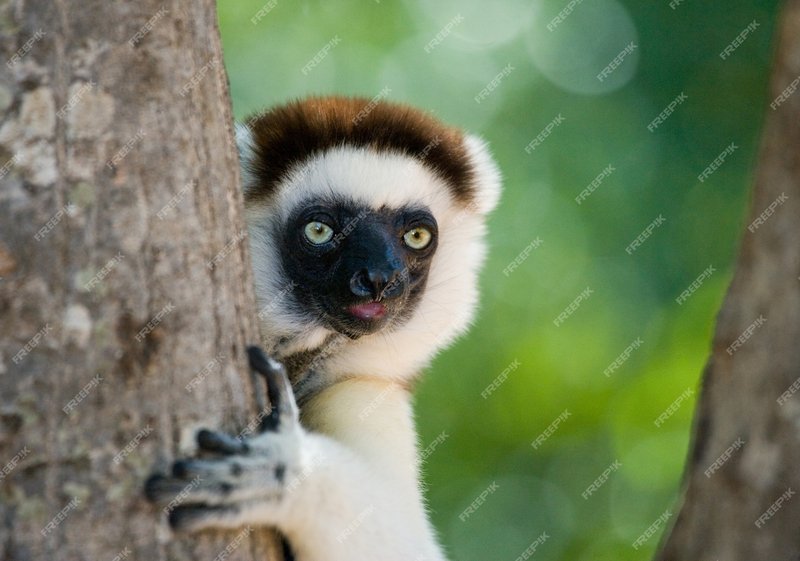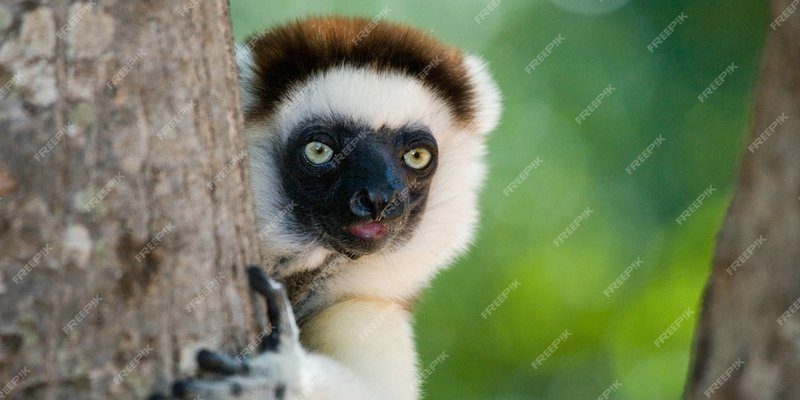
These playful primates are known for their incredible leaping abilities and striking white and black coats, which makes them stand out in the lush forests of Madagascar. As you sip your coffee, let’s dive into how this remarkable animal is portrayed across different cultures and the tales that surround it. By the end, you might find yourself enchanted not just by the sifaka, but by the stories that tell of its place in human culture.
The Sifaka in Madagascar’s Folklore
Madagascar is rich with folklore, and the sifaka plays an intriguing role in many local stories. In several tribes, this animal is considered sacred. Let’s start with the Betsileo people, who view the sifaka as a guardian spirit. They believe that these creatures protect the forest and anyone who harms them will face misfortune. This cultural reverence highlights the importance of biodiversity and conservation efforts.
Another tale comes from the Merina tribe, where the sifaka is associated with the spirit world. In some stories, these lemurs are seen as messengers between humans and the ancestors. This connection illustrates the deep respect for nature and the belief that animals carry wisdom and messages from the past.
These tales remind us of how intertwined nature and culture can be. The sifaka isn’t just another animal; it plays a significant role in the lives of people, shaping their understanding of the world around them.
The Sifaka’s Unique Behavior and Its Cultural Symbolism
You might be wondering what makes the sifaka so special in terms of behavior. These lemurs are known for their impressive leaping skills, often described as graceful dancers. When they navigate through the trees, they use their strong legs to leap from branch to branch, making it look effortless. This leaping ability symbolizes freedom and agility in various stories.
In many cultures, the sifaka’s unique way of moving serves as a metaphor for overcoming obstacles. It’s a reminder that life can be challenging, but with the right skills and determination, you can leap over anything that stands in your way. This connection to resilience resonates with many cultures, making the sifaka a powerful symbol of hope and strength.
Furthermore, the sifaka’s social behavior also plays a role in its cultural significance. They are known for their close-knit family groups, which mirrors the emphasis on community in many cultures. This social structure is often reflected in folklore, where the sifaka teaches the importance of teamwork and support among family members.
Sifaka Representations in Art and Literature
Artistic representations of the sifaka can be found throughout Madagascar and beyond. Local artists often depict these striking creatures in various forms, from paintings to carvings. These artworks celebrate the unique beauty of the sifaka and serve as a reminder of Madagascar’s rich biodiversity.
In literature, the sifaka has also made its mark. Several children’s books showcase this lemur, using it as a character to teach lessons about nature, friendship, and conservation. These stories not only entertain but also educate young readers about the importance of protecting wildlife and their habitats.
Moreover, as awareness of environmental issues grows, more authors are incorporating the sifaka into their narratives as a symbol of endangered species. Bringing the sifaka into mainstream literature helps raise awareness about conservation efforts and the challenges these animals face due to habitat loss.
Scientific Research and Cultural Significance
As scientists study the sifaka, they uncover more than just biological facts; they also reveal how deeply intertwined this animal is with the human experience. Researchers have documented not only the sifaka’s behaviors and social structure but also how local communities perceive them. These studies highlight the importance of understanding cultural perspectives in conservation efforts.
By integrating scientific research with cultural narratives, we can create a more holistic approach to protecting the sifaka and its habitat. This collaboration encourages local communities to participate in conservation, recognizing the value of their cultural stories alongside scientific data.
Furthermore, organizations promoting conservation often use the sifaka as a mascot because of its charm and cultural importance. This strategy not only draws attention to the species but also educates the public about the importance of preserving Madagascar’s unique ecosystems.
Modern Representation and Conservation Efforts
In our modern world, the sifaka’s image is often used in conservation campaigns. This is more than about saving an adorable animal; it’s about preserving an entire ecosystem. The sifaka has become a symbol of the fight against deforestation and climate change, drawing attention to the struggles faced in Madagascar.
Organizations like the Madagascar Biodiversity Partnership have adopted the sifaka to engage the public in discussions about conservation. Through documentaries, social media, and educational programs, they highlight the sifaka’s plight and encourage people to take action, whether through donations or spreading awareness.
Moreover, eco-tourism has emerged as a way to promote the sifaka while benefiting local communities. Tourists flock to Madagascar to see these lemurs in their natural habitat, which provides funding for conservation efforts and helps support local economies. This synergy creates a win-win situation, preserving both the wildlife and the culture that cherishes it.
The sifaka is more than just a vibrant, acrobatic lemur; it represents a rich tapestry of stories, values, and lessons in Madagascar and beyond. Through various cultural interpretations, artistic expressions, and conservation efforts, this animal serves as a reminder of the connection between humans and nature.
Understanding how the sifaka is woven into the fabric of culture helps us appreciate the importance of preserving not just the species, but also the natural world that sustains us all. So, the next time you hear about the sifaka, think of it as more than just a cute animal—it’s a symbol of resilience, community, and the urgent need for conservation.

